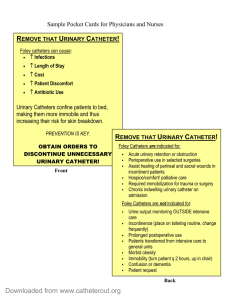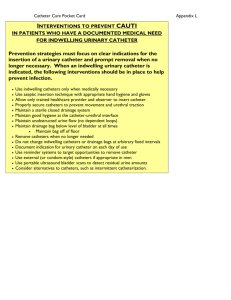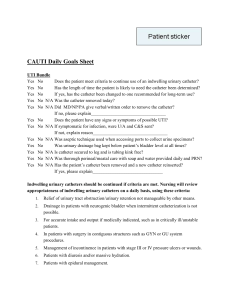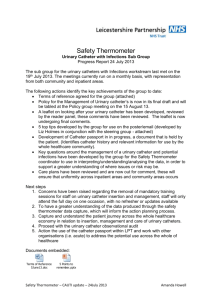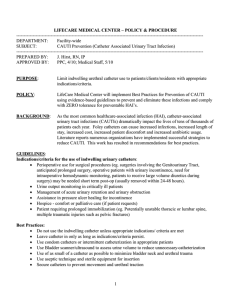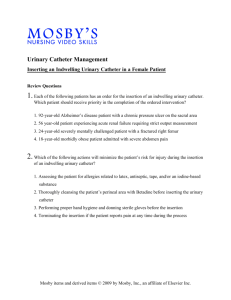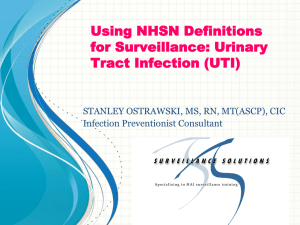Q10D Online GPS 9_30..
advertisement
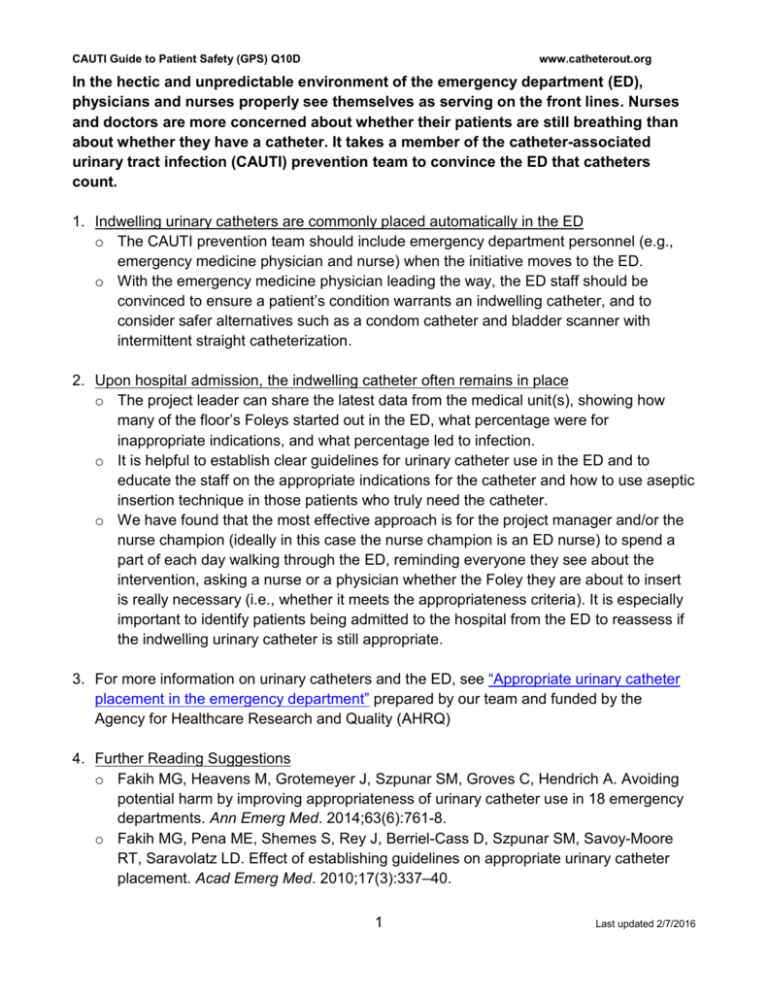
CAUTI Guide to Patient Safety (GPS) Q10D www.catheterout.org In the hectic and unpredictable environment of the emergency department (ED), physicians and nurses properly see themselves as serving on the front lines. Nurses and doctors are more concerned about whether their patients are still breathing than about whether they have a catheter. It takes a member of the catheter-associated urinary tract infection (CAUTI) prevention team to convince the ED that catheters count. 1. Indwelling urinary catheters are commonly placed automatically in the ED o The CAUTI prevention team should include emergency department personnel (e.g., emergency medicine physician and nurse) when the initiative moves to the ED. o With the emergency medicine physician leading the way, the ED staff should be convinced to ensure a patient’s condition warrants an indwelling catheter, and to consider safer alternatives such as a condom catheter and bladder scanner with intermittent straight catheterization. 2. Upon hospital admission, the indwelling catheter often remains in place o The project leader can share the latest data from the medical unit(s), showing how many of the floor’s Foleys started out in the ED, what percentage were for inappropriate indications, and what percentage led to infection. o It is helpful to establish clear guidelines for urinary catheter use in the ED and to educate the staff on the appropriate indications for the catheter and how to use aseptic insertion technique in those patients who truly need the catheter. o We have found that the most effective approach is for the project manager and/or the nurse champion (ideally in this case the nurse champion is an ED nurse) to spend a part of each day walking through the ED, reminding everyone they see about the intervention, asking a nurse or a physician whether the Foley they are about to insert is really necessary (i.e., whether it meets the appropriateness criteria). It is especially important to identify patients being admitted to the hospital from the ED to reassess if the indwelling urinary catheter is still appropriate. 3. For more information on urinary catheters and the ED, see “Appropriate urinary catheter placement in the emergency department” prepared by our team and funded by the Agency for Healthcare Research and Quality (AHRQ) 4. Further Reading Suggestions o Fakih MG, Heavens M, Grotemeyer J, Szpunar SM, Groves C, Hendrich A. Avoiding potential harm by improving appropriateness of urinary catheter use in 18 emergency departments. Ann Emerg Med. 2014;63(6):761-8. o Fakih MG, Pena ME, Shemes S, Rey J, Berriel-Cass D, Szpunar SM, Savoy-Moore RT, Saravolatz LD. Effect of establishing guidelines on appropriate urinary catheter placement. Acad Emerg Med. 2010;17(3):337–40. 1 Last updated 2/7/2016 CAUTI Guide to Patient Safety (GPS) Q10D www.catheterout.org o Gokula RM, Smith MA, Hickner J. Emergency room staff education and use of a urinary catheter indication sheet improves appropriate use of Foley catheters. Am J Infect Control. 2007;35(9):589-93. 2 Last updated 2/7/2016
